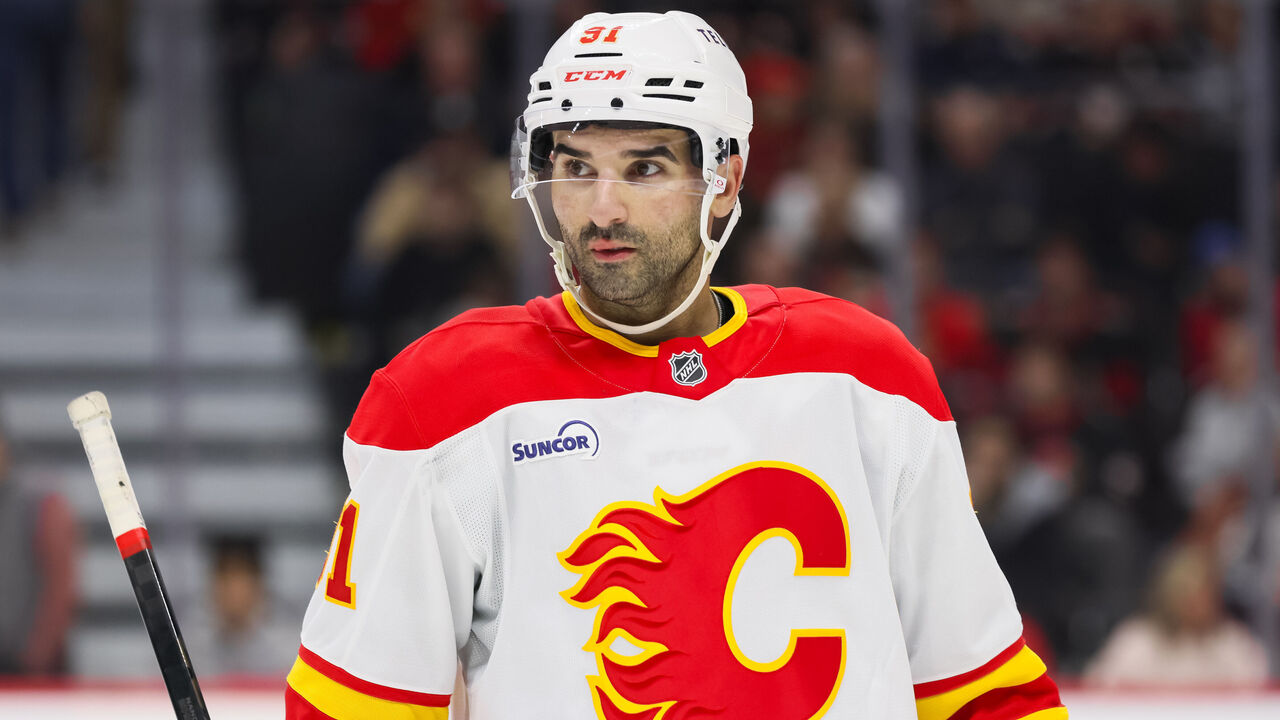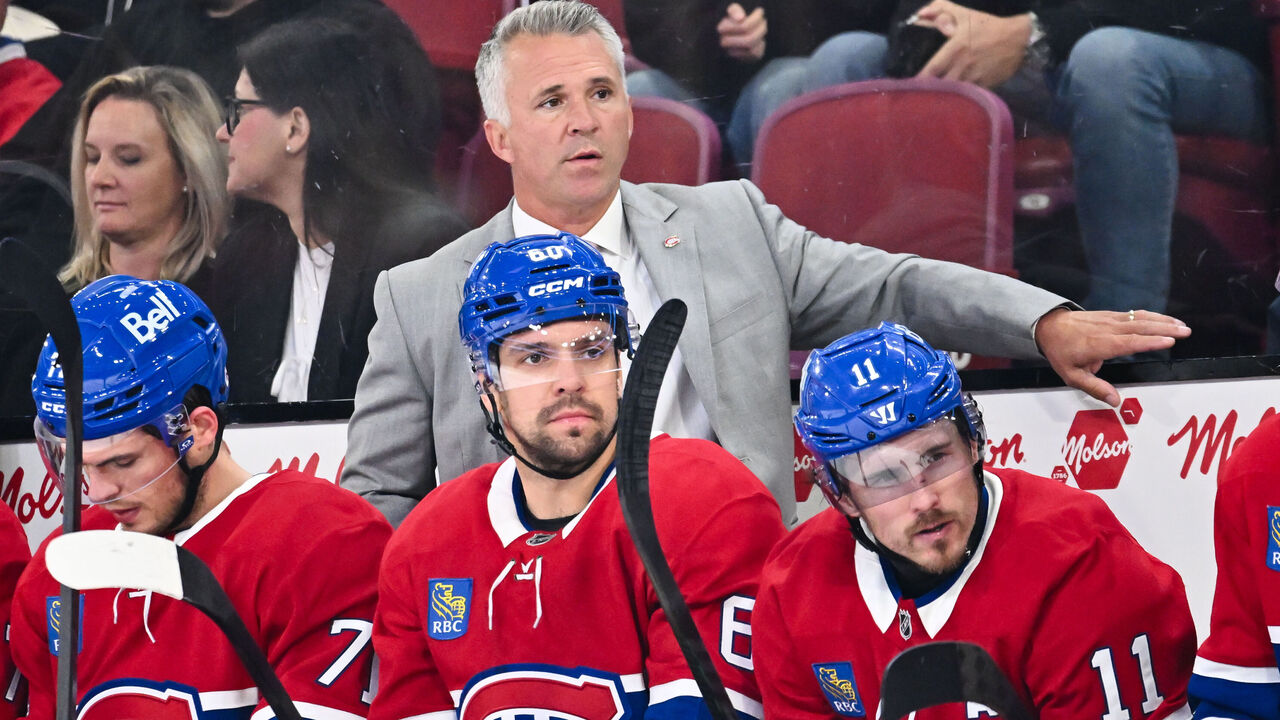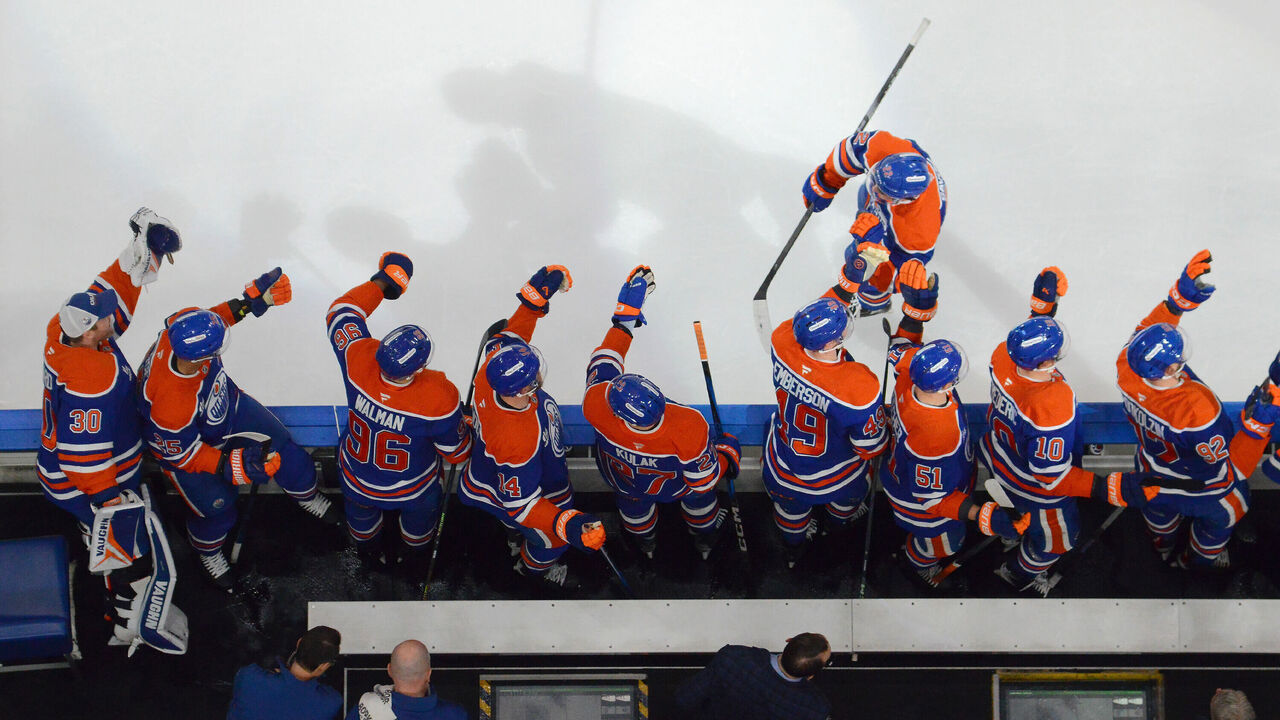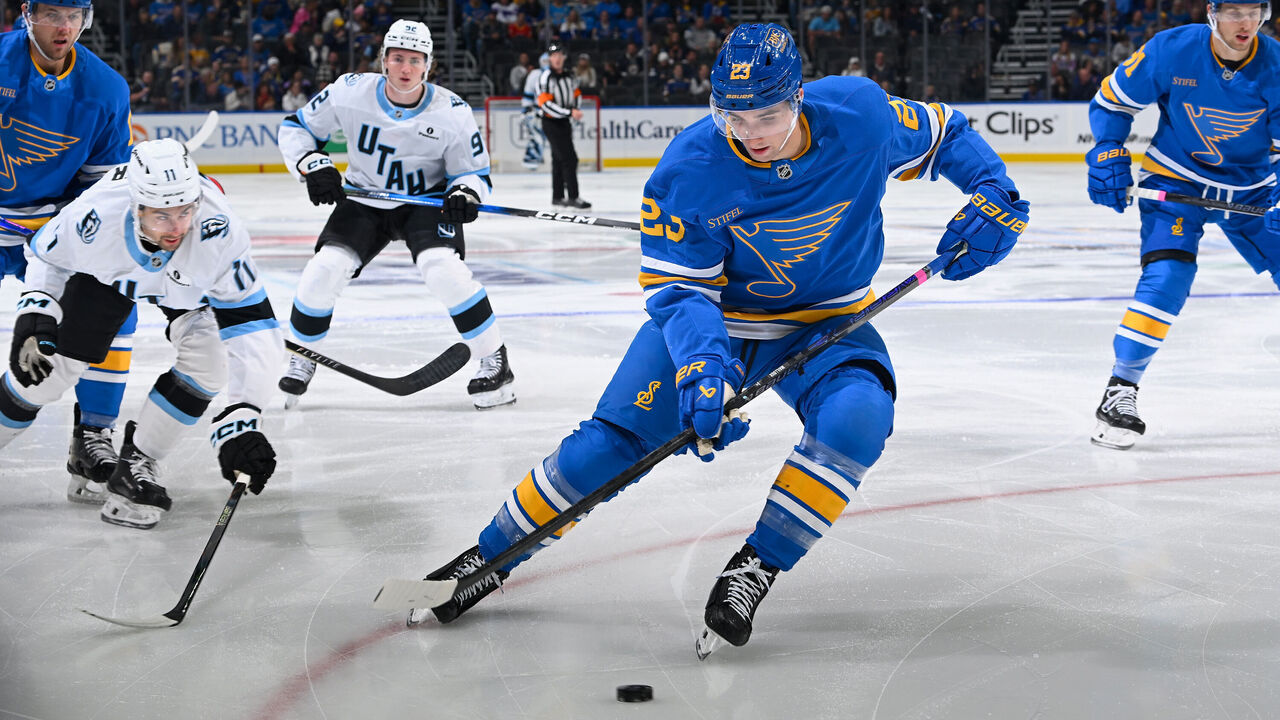New contenders? No trades? Zegras back? Making sense of 8 early NHL trends
With the calendar flipping to November, the 2025-26 season is starting to take shape. Some patterns and storylines will have staying power; others will disappear as the sample size grows. For now, let's try to make sense of a bunch of curious trends emerging at roughly the 12-game mark.
No sellers means no trades
It was crickets on the trade front from the back half of July through early September. Then a quiet preseason. And the start of the regular season has featured just two trades involving two NHLers (Kurtis MacDermid, Lukas Reichel), neither of which qualify as a significant addition to the acquiring team.
There's a trade drought because seemingly every general manager thinks his group is at the very least decent. No team has declared itself a definitive seller.
Calgary and Boston are obvious candidates to offload a key veteran or two. However, both entered 2025-26 eyeing the best-case scenario on the ice. The Bruins are a respectable 6-7-0 and the Flames are a miserable 2-8-2. There should be movement on the Nazem Kadri and Rasmus Andersson files soon.

The Penguins and Kraken, two other potential sellers, are off to hot starts and thus uninterested in shipping out pieces (at least not anytime soon). Longtime bottom-feeders Chicago, San Jose, and Anaheim are on the rise, and while they're all unlikely to add, they're also unlikely to subtract. The Predators and Islanders are worth keeping tabs on; if a disappointing first three weeks stretches to six, or eight, management will be incentivized to consider moves.
Zegras back in spotlight
Trevor Zegras was once one of the young faces of the NHL, having buried multiple lacrosse-style goals, pulled off a Michigan assist, and appeared on the cover of NHL 23. The flashy playmaker slowly faded into the background as an underperforming member of a rebuilding Ducks team before getting shipped to Philadelphia in change-of-scenery trade in late June.
Zegras is suddenly relevant again, leading the 6-3-1 Flyers in assists (eight) and points (12). The 24-year-old put on a clinic Thursday, sniping twice and adding an assist in a 4-1 win over Nashville. He's been skating well, seeing the ice well, and shooting well. Most encouragingly, Zegras seems rejuvenated and at ease, as though a reset was exactly what he and his career needed.
"He's playing with a ton of confidence right now," Flyers defenseman Travis Sanheim told reporters following Thursday's victory. "You can see that he has got his legs and his hands, and he's just playing a really solid game. I'm happy for him. He's been working hard and trying to play the right way."
Positivity for Rangers, Canadiens

Two Eastern Conference teams are showing dramatic defensive improvements, according to advanced stats produced by Sportlogiq.
The Rangers, under new coach Mike Sullivan, are tied for third in goals against per game (2.42) after finishing 19th last season. Goalies Igor Shesterkin and Jonathan Quick have been lights-out most nights (.910 combined save percentage) and the skaters have provided excellent support:
| Defensive stat | 2024-25 rank | 2025-26 rank | Rank differential |
|---|---|---|---|
| Expected goals | 26th | 14th | +12 |
| Shot attempts | 22nd | 12th | +10 |
| Shots on goal | 27th | 5th | +22 |
| Slot shots | 30th | 7th | +23 |
| Inner-slot shots | 30th | 4th | +26 |
| OZ possession time | 25th | 21st | +4 |
The Canadiens, under fifth-year bench boss Martin St. Louis, are tied for 14th in goals against per game (3.00) after finishing 22nd last season. While goaltending has been inconsistent (.887 team SV%), Montreal's young group of skaters has stepped up, cleaning up the defensive zone year over year:
| Defensive stat | '24-25 rank | '25-26 rank | Rank differential |
|---|---|---|---|
| Expected goals | 24th | 15th | +9 |
| Shot attempts | 27th | 13th | +14 |
| Shots on goal | 19th | 8th | +11 |
| Slot shots | 26th | 5th | +21 |
| Inner-slot shots | 23rd | 6th | +17 |
| OZ possession time | 29th | 12th | +17 |
Coming soon: 2 new titans
If the playoffs started Saturday, seven teams that didn't make the cut last year would be in: Detroit, Pittsburgh, Philadelphia, and Columbus in the East, and Utah, Anaheim, and Seattle in the West.
With apologies to Penguins, Flyers, Blue Jackets, Ducks, and Kraken fans, the Red Wings and Mammoth are the two clubs that look legitimately good. When the Wings play their A game, they're not just a playoff-caliber team, but also a squad that could win a series. Utah, meanwhile, is building something special over the long term and currently has enough talent and depth to claim a wild-card spot.
More broadly, the Mammoth and Canadiens (second wild-card team in the East last season) are slowly altering the power dynamics in their respective divisions, conferences, and the league as a whole. It might not all come together this year, or next, but it sure feels like Utah and Montreal will be perennial Stanley Cup contenders soon enough. Both franchises have drafted well and invested in young core pieces, and it's all beginning to pay off.
Tight games and goals galore

A few eyebrow-raising stats worth monitoring:
The season was 177 games old as of Friday morning. A whopping 139 of those contests (or 78.5%) were decided by either one goal or two-plus goals with an empty-netter. That's the highest percentage of "close" scores through 177 games in history, according to NHL public relations.
The average game in 2025-26 has included 6.5 power-play opportunities, up from 5.4 last year. (The average power-play success rate, or PP%, has gone virtually unchanged - 21.6% in 2024-25, 21.2% this season.)
Save percentages have steadily declined over the past decade. The league-wide SV% sits at .895 heading into Saturday's slate. The last time a season-ending SV% dipped below .900 was way back in 1995-96.
Sizing up hypothetical Team Russia
The early-season Art Ross Trophy race consists of Canadian and American players, plus two outsiders in Czech David Pastrnak and Russian Evgeni Malkin. The "Rocket" Richard race is all Canadians and Americans, except for Czech Martin Necas, German Leon Draisaitl, and Russian Pavel Dorofeyev.
Unlike their peers, Malkin and Dorofeyev won't be headed to Italy in February. Russia is banned from competing in the 2026 Olympics due to sanctions imposed by the International Olympic Committee following the invasion of Ukraine in 2022. The country's exclusion is totally understandable.
Fun hypothetical, though: Would Team Russia be a serious contender for gold?
Here's a mock lineup:
| LW | C | RW |
|---|---|---|
| Kirill Kaprizov | Evgeni Malkin | Nikita Kucherov |
| Artemi Panarin | Kirill Marchenko | Pavel Dorofeyev |
| Alex Ovechkin | Pavel Buchnevich | Ivan Demidov |
| Valeri Nichushkin | Ivan Barbashev | Dmitri Voronkov |
| LD | RD |
|---|---|
| Mikhail Sergachev | Vladislav Gavrikov |
| Nikita Zadorov | Artem Zub |
| Alexander Nikishin | Alexander Romanov |
| Starter | Backup |
|---|---|
| Igor Shesterkin | Sergei Bobrovsky |
Russia's biggest strengths are playmaking wingers and stud goalies. Its weaknesses are a lack of natural centers and lack of dynamic defensemen.
Russia wouldn't be a top-tier gold-medal threat like Canada or the United States. But, based on the lineup above, the team would be in the second tier alongside Sweden.
Who's been lucky? Unlucky?
We're working with small sample sizes three-plus weeks into the season. Still, even limited data can help us identify who's gotten super lucky and unlucky.
Golden Knights star winger Mitch Marner has enjoyed arguably the best puck luck in the league. He's rocking an 18.8 on-ice shooting percentage and .929 on-ice save percentage, according to Natural Stat Trick. Vegas is destroying the competition 22-6 in Marner's 231 total minutes.

Blues defenseman Logan Mailloux, with an on-ice SH% of 3.3 and an on-ice SV% of .706, has battled arguably the worst puck luck. St. Louis is down 1-10 in Mailloux's 99 minutes. What a frustrating start for the 22-year-old.
Pittsburgh is arguably the luckiest team given its league-high PDO (on-ice shooting and saving percentages combined) of 1.06. This is unsurprising since the Penguins are a team in transition that's overachieving.
The team with arguably the worst luck: The Blues, with a dreadful PDO of 0.94.
So long, 2026 UFA class hype
The 2026 unrestricted free-agent class looked absolutely stacked coming out of the summer. It can be best described as mediocre at the start of November.
Kirill Kaprizov, Connor McDavid, Jack Eichel, Kyle Connor, and Necas all signed contract extensions between Sept. 30 and Oct. 30. Artemi Panarin, Adrian Kempe, and Alex Tuch now headline the class - and it's possible two or three of them will also sign extensions, muting any remaining buzz ahead of July 1.

Those five recent extensions were relatively similar: front-loaded, bonus-heavy contracts for high-impact players in their mid-to-late 20s. McDavid, who's a special case, was the only one who didn't sign for the maximum eight years.
The rules around contract structure are changing next September as the new collective bargaining agreement between the league and NHL Players' Association comes into full effect. The max term will decrease from eight to seven years for an extension (and from seven to six years on deals signed in free agency), while restrictions will be placed on front-loading and bonuses.
John Matisz is theScore's senior NHL writer. Follow John on Twitter/X (@MatiszJohn) or contact him via email ([email protected]).